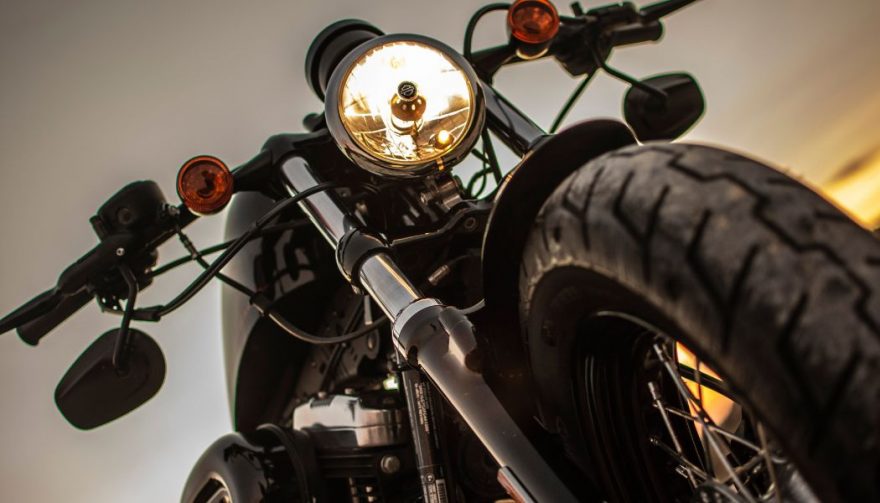
How To Get The Best Price For Your Used Motorbike
Avoid Potential Scams with These Great Tips
So, you’re looking to begin selling your motorbike and searching for tips to maximize your return? This article will help yield maximum returns without having to jump through too many metaphorical hoops.
Whether you’re looking to sell your current bike, fancy an upgrade to a new model, or no longer use your bike often enough to warrant keeping it, there are a few key variables to the selling process.
Before the internet, selling your used motorbike, or anything for that matter, was a bit more arduous. “Curbside selling,” or private sales, were more commonplace, involved more legwork, and cast a much narrower net of potential buyers. These days, you can easily get your sale out to a much larger audience, but on the other side of the coin, there are some new pitfalls.
The internet age has, unfortunately, created a plethora of scams. Consequently, you need to be alert, take your time, and size up any potential buyers quickly and accurately to avoid becoming another scam statistic.
Rule of thumb, if it sounds too good to be true, it probably is, and it’s probably a scam.
Private Sale or Dealer Sale
With that said, the first question that requires resolving is whether you wish to sell privately or through a dealer.
Selling privately has numerous potential disadvantages, but with a few big advantages as well. The most obvious is that once your sale is complete and the transaction goes through, no percentage goes to a dealer; you keep all the funds.
However, the negatives can be many if you’re not careful; you can easily end up out of pocket or even out of a bike.
If selling through a dealer, pick one with a good reputation, one that most motorbike enthusiasts know, and that makes the process easy for you. The other key variable is the percentage or cuts they take on a sale, as this affects your bottom line.
If selling privately, it’s important to keep the following points in mind.
- Do not have potential buyers coming to your private residence. Instead, pick a neutral location; one that is not isolated, and bring along a friend in case things go a bit sideways.
- Be prepared not to move forward with the sale. Should the potential buyer give off less-than-honest vibes or seems a bit shady, back out. Better safe than sorry!
- Insist on cash, money order, or direct deposit via Interac. Do not accept personal cheques, IOUs, swaps, or anything else that has the potential to backfire on you. When the bike changes hands, so should the funds.
- Set a fair price. Look online for a similar bike and price yours accordingly.
- For a small fee, you can utilize a cycle trader or auto trader publication to reach a larger targeted audience. See below for more info and links.
The following guidelines for selling your motorbike apply to whatever route you choose and will help get your bike sold quickly and for its true value.
Clean It Up
Firstly, no one will get excited about a dirty-looking uncared-for motorbike. Spend some time and elbow-grease in getting your current ride looking as new as possible. Should you have it, wax and polish the parts that are conducive to looking that way. Anything to make it look new and in great condition will only help the resale value.
Consumable parts
Every moving vehicle has parts that quickly get used and worn out. Brakes, tyres, and similar items wear with time. Should your motorbike have significantly used parts, it’s worthwhile to replace those parts before putting it up for sale.
Fix Anything That is Broken or Exceptionally Used Looking
A rough-looking chain, broken light, or smashed-up rear-view side mirrors will discourage potential buyers. A small investment in this arena can go a long way in obtaining what you want for your ride. Keep all your receipts to prove to a potential buyer that the parts in question are brand new. Should something need repair that requires a subsequent inspection, it’s prudent to get it all done before selling; this will only put the buyer at ease and excited about the potential sale.
For example, if there are larger mechanical issues, be up-front about them and adjust the price accordingly. Don’t waste your time or others by misrepresenting your used motorbike. Be upfront; it’ll pay off in the end.
Keep it Original
Swap any aftermarket parts you fitted back to OEM standard where possible. Bikes with factory exhausts or standard indicators usually sell for more than those with aftermarket alternatives.
Take Lots of Detailed Pictures
As the saying goes, “A picture is worth a thousand words,” and when it comes to selling your motorbike, or anything for that matter, a great picture, or series of great pictures, can help seal the deal!
So, take many clear, in-focus pictures, preferably from many different angles, to showcase what you’re selling in the best possible light.
Test Rides
This can be tricky, but should the potential buyer wish to take a test ride, receive cash in hand before letting a stranger jump on your bike. You also need to clearly communicate that if there is an accident, the buyer assumes all responsibility. If possible, have the potential buyer ride your bike within your view. If not possible, set a precise time limit on the test ride; say for a maximum of ten minutes.
Clearly Communicate the Facts
The best policy when selling a used vehicle, be it an automobile or bike, is to include the details: current mileage, any upgrades, relevant mechanical history, and so on. The more information you include upfront, the fewer questions you will have to field when meeting face-to-face.
For more motorbike tips and additional help selling your bike, check out the links below.
Now that you’re selling your old motorbike, it may be time to find a new ride.





